
Drain tile is designed to redirect excess groundwater, rainwater, or surface runoff away from a building’s foundation. It helps prevent water from seeping into basements or crawl spaces, which can cause flooding, dampness, and structural damage.
When You Need Drain Tile
Drain tile is typically installed in the following situations:
- Preventing Basement Flooding: If your basement is prone to flooding or experiences water intrusion, drain tile can help channel water away from the foundation, keeping the basement dry.
- Managing Surface Water: Drain tile is useful in areas with poor drainage, especially if your property slopes towards your home, leading to water pooling near the foundation.
- Solving Waterlogged Yards: In yards with persistent waterlogging or poor drainage, drain tile can help improve the overall landscape by removing excess water.
- Preventing Soil Erosion: Drain tile can also be used on slopes to control erosion by directing water flow and reducing soil erosion.
While drain tiles and French drains mean the same thing, most people use French drain to refer to the drains used to remove pooling water from yards and drain tile to mean drains that remove water from around a house’s perimeter.
The average cost of installing a drain tile is around $4500. It may cost more or less depending on the depth and width of the drain and importantly where it is being installed. Installing a drain tile outside the house perimeter will generally cost more since it involves excavating through sidewalks, deck, patio or landscaping then putting it back together.
Two of the most important considerations to make when installing a drain tile is to decide whether to have it outside or inside the house and where to direct the water after it is collected by the pipes.
While installing drain tile outside the house provides better drainage, the system is prone to clogging due to fine soil (mixed with water to form mud) penetrating through the gravel and blocking the perforations.
The water collected by the drain tile is usually directed downslope away from the house either to a storm drain or where it can easily percolate into the earth. If that is not possible, it is first dumped into a sump pit in the basement or crawlspace where it is then pumped out.
Why is it called So?
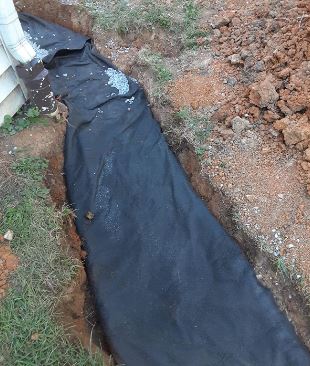
Although we call them drain tiles, there are no tiles in these drainage systems. Just plastic perforated pipes laid in a trench then covered using gravel.
So, why is it called a drain tile?
Before drain tiles found use in water drainage in homes, they had been used for hundreds of years in food production. Back then, they were made from fired clay and formed into round section of terracotta pipes.
That is also the material used as roofing tile. And that is how these drainage pipes came to be known as drain tiles till today.
Its History
Outside of the United States, drain tiles were extensively used especially by the Babylonians and Egyptians to remove excess water from farms. By so doing, the soil was properly aerated which improved food production.
Drain tiles were introduced in the United States in 1838 by John Johnston, a Scottish immigrant in his farm in Seneca County, New York. It is said that Johnston laid 72 miles of drainage tile in his 320-acres farm.
For his efforts, he was able to increase his wheat yield from 12 to 60 bushels per acre. And that is how he came to be known as “The Father of Tile Drainage in the United States.”
John Johnston’s farm practices were further revolutionized by Henry French in 1860 in his book ‘Farm Drainage’. And that is how these drainage systems are also known as French Drains, not because they originated from France but after the Henry French who was also the assistant secretary of the United States treasury.
In Farm Drainage, Henry French wrote about the principles, processes of draining land with stones, wood, plows and open ditches, and especially with tiles.
How it Works
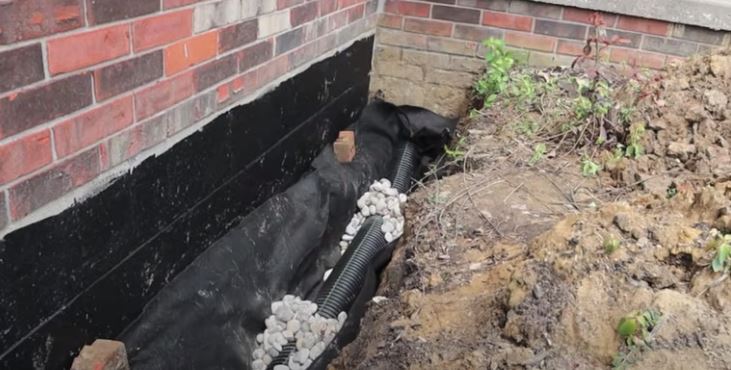
Although I mentioned that the piping in Drain tiles is made of plastic, there are still homes (old houses) which still have the old drain tile made from fired clay (terracotta clay) pipes.
As you can imagine, having holes on this types of pipes was very difficult. What was done then is that the sections of pipes would be laid down but a small gap would be left between each 2 sections of pipes to allow in the water.
That however posed a problem since soil could enter inside the pipes and clog them. To fix this problem, a small section of pipe cut in half would be placed on top of the gap before the gravel was added.
Water would then enter the piping from the bottom and not the top. It was not perfect but it worked so well that some homes still have those pipes to date.
Another challenge with these pipes is that since they are not flexible, you needed to have a 90-degrees corner when you had to change the direction of water flow.
Comparing that to driving, you would know that to take a corner you have to bring your car to almost zero speed.
And that is how these pipes fall out of favor and flexible corrugated plastic pipes were introduced. To start with, these pipes are cheap compared to terracotta clay pipes and last way longer.
The main advantage with corrugated drain pipes however was in their flexibility. It is easier to curve them if you need to change the direction of water flow. Again comparing that to driving, you don’t need to slow down that much when going round a curve. That means improved drainage.
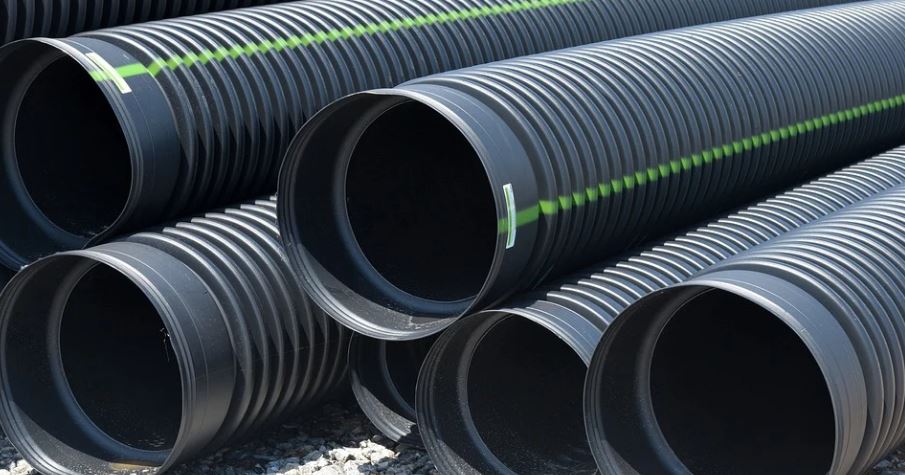
With a corrugated drain pipe, slits are made inside the grooves and the ridges make it hard for gravel and mud to penetrate and clog them.
Rigid PVC pipes are also used in modern drain tile systems. These 10-feet pipes are stronger than corrugated drainpipes with a crush-resistance of 3000 pounds.
They come with pre-drilled holes and it is important to mention that they should be installed facing down and not up. A lot of people make that mistake.
Water penetrates the gravel past the top of the pipe and then enters them from below. Since the pipe is sloping away from the house, the water will simply flow away via gravity.
But why not have the holes at the top you ask?
The idea is to remove water, right? By having the holes at the top, it means the water in the drain tile will need to accumulate round the pipes until it can reach the holes at the top of the pipe.
As such, you will always have water pooling around the house’s foundation which will eventual percolate inside your house. That nullifies the essence of having the drain tile in the first place.
And that is why it is important to make sure that you have laid the pipes with the holes facing down.
Another thing, why do you need to cover the perforated pipe with gravel?
It is simple! Gravel improves drainage since it is easier for water to percolate through it and reach the drainpipe than soil. The gravel also works as a filtration unit keeping debris at bay.
Does the Shape Matter?
We have seen a few companies try to deviate from the normal round PVC pipes and market square and rectangular pipes as a better alternative.
Their argument has been that since square or rectangular pipes have a bigger base, they provide a bigger surface area for water to get into the pipe and therefore fast and efficient drainage. On paper, that makes a lot of sense.
The truth of the matter however is that there is no study that shows that square and rectangular drain pipes perform better than round ones.
If I were asked, I would say stick to what has withstood the test of time. Old good round PVC or corrugated pipes. A properly installed and maintained round drain tile will last for decades.
Drainage Fabric – Do You Need It?
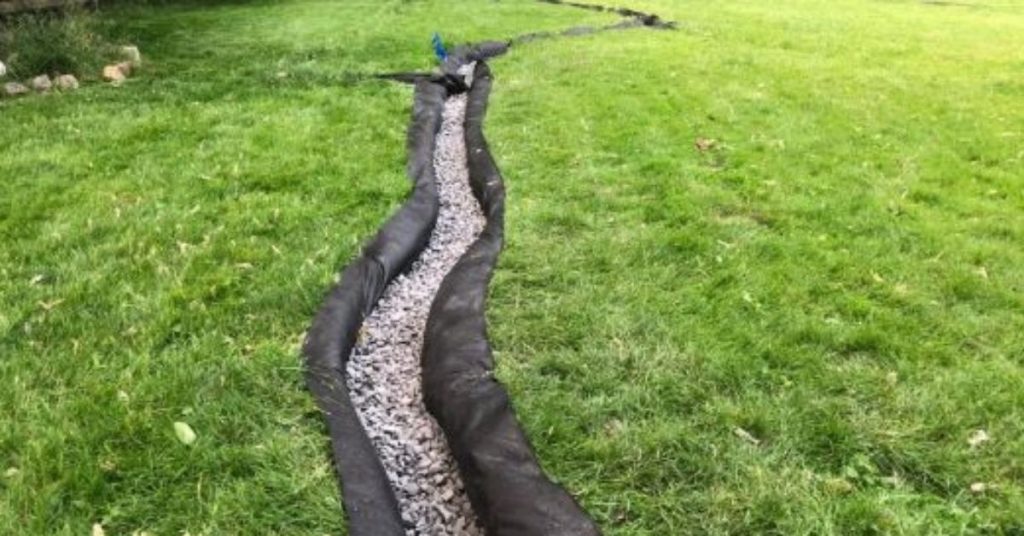
In modern plumbing, drainage fabric (landscaping fabric or drainage sock) has been used to line drain tiles for improved drainage. It is however a controversial topic among many in the industry.
Ideally, a drainage fabric is used to wrap the pipe and the gravel together in what is a called a ‘burrito wrap’. The drainage fabric allows water into the drainage system but keeps away soil and other debris.
That way, you are guaranteed that your drain tile will not clog. There are even drain pipes which are sold already wrapped using this fabric.
Those who oppose the use of a drainage fabric in drain tiles argue that while the fabric will prevent the pipe from being clogged, it will (the fabric) get plugged by mud and fine soils meaning no water will get inside the drainpipes.
What you can do is to consult a drainage expert in your area on the pros and cons of either system.
The one thing I know is that if you want to completely avoid a clogged drain tile is to install it inside your house just next to the foundation. That method is however not without its disadvantages.
Installations Specifications
Drain tiles may look easy to install but I can assure you that if one thing is done wrongly it will end up making the whole system useless. There are also codes specifications you have to abide by.
I would recommend that if you are considering installing a drain tile around your house to just have a professional come over and do it.
The following are some of the things to know:
- A minimum slope of ¼ inch per foot of drainpipe is needed.
- Gravel should extend a minimum of 12 inches outwards and 16 inches upwards.
- For best drainage, use round, washed gravel that is 1 to 1.5 inches in size. Crushed rock may work but has the likelihood to plug the perforations.
- For foundation drainage system, the standard pipe size is 4 inches in diameter.
- When installing a drain tile in a new house (during construction), it should be installed immediately after foundation footer is laid, usually in a 5/6-inch deep trench alongside the footer.
Do You Need It?
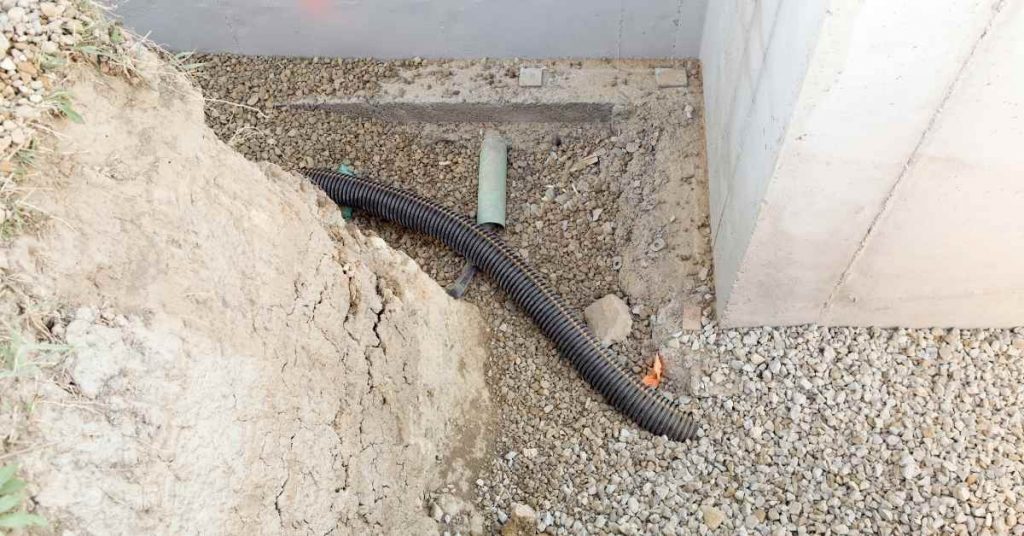
Does every house need a drain tile? Or rather when is a drain tile deemed necessary? What does the code say about it?
According to section R405 of the international Residential Code (IRC), “Drains shall be provided around concrete or masonry foundations that retain earth and enclose habitable or usable spaces located below grade”.
It also goes ahead to state as follows “Drainage tiles, gravel or crushed stone drains, perforated pipe or other approved systems or materials shall be installed at or below the area to be protected and shall discharge by gravity or mechanical means into an approved drainage system”.
By that you now know if your know should or shouldn’t have a drain tile. But what exactly does the code say about those who are exempted from the above requirement?
The code states that a drainage system (in this case a drain tile) is not required if the foundation is sitting on well-drained soil. You can test the type of soil you have but it does not hurt to have this drainage system purely as another layer of protection.
Inside vs Outside Drain Tiles
While incorporating a drain tile while building a house is quite easy and cheap, retrofitting one in an already existing house is very expensive, noisy, labor-intensive and just inconvenient for the duration that it lasts.
The question to ask yourself is where you want the drain tile installed, either inside or outside the house. While an expert can help you decide that, each one of them has advantages and disadvantages.
To install a drain tile outside your house, major excavations may be needed to remove sidewalks, patios, decks, landscaping and other installations. If that is not something you want to do, you can have the drain installing inside the house along the perimeter of the foundation.
When being installed inside the house, jackhammers are used to break up the concrete and a channel is then cut near the foundation walls. The pipe is then laid beneath the floor sloping towards a sump pit.
A pump inside the pit will then pump out the water automatically when it reaches a certain level then stop when it falls to the desired level. Just make sure that the sump pump is backed up and that it will handle the water in the event of a heavy downpour.
After installed the drain tile, the floor is patched up again. The system can last for a long time since it will hardly clog.
Unfortunately, an inside drain tile is not as effective as a system that incorporates and outside drain tile. With an outside drain tile, the systems drains away the water before it gets to the house’s foundation.
